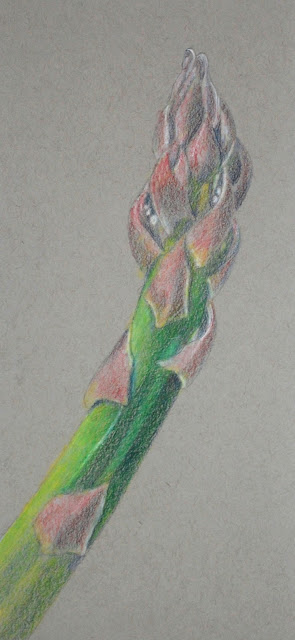| I started adding color. For demonstration purposes I have worked more on some small areas when normally I would work on the entire piece and finish it as a whole. I used canary yellow, peacock blue, grass green and white on the leaves. first I layered the entire leaf, even the white highlight, with yellow. next I layered the leaf with peacock blue avoiding the highlight areas. I then used grass green and did also carefully go over the highlight areas. I layer these colors until I get good coverage. I used extra yellow on the middle vein of the leaves to get the yellow green. I then use white to shape the highlights, stems, veins and edged. I use peacock blue yellow as a shadow. Remember the gradate shadows and highlights. Scribble to get texture. The brown stem/branch was made with white, yellow, and red (either or both reds, crimson or carmine, will work). I used white for highlights and a little extra blue (true blue I think?) for the shadows. For the flower I used both reds, more white and a little yellow on the red parts. The part above/around the red I used grass green, canary yellow and carmine red plus white. The main thing is work in light layers and build your color and value. Pay attention especially to the values. |




















